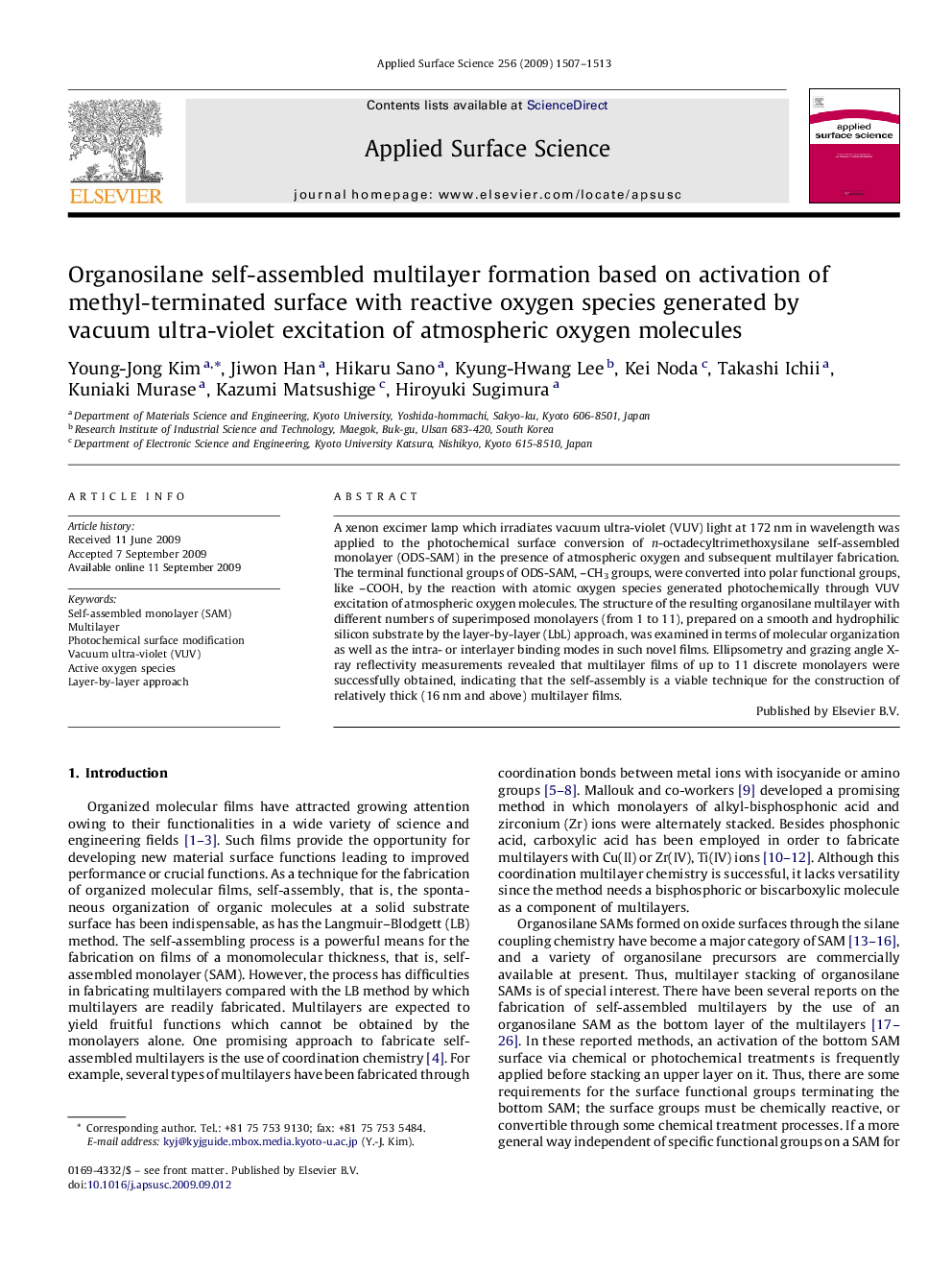| Article ID | Journal | Published Year | Pages | File Type |
|---|---|---|---|---|
| 5360863 | Applied Surface Science | 2009 | 7 Pages |
Abstract
A xenon excimer lamp which irradiates vacuum ultra-violet (VUV) light at 172Â nm in wavelength was applied to the photochemical surface conversion of n-octadecyltrimethoxysilane self-assembled monolayer (ODS-SAM) in the presence of atmospheric oxygen and subsequent multilayer fabrication. The terminal functional groups of ODS-SAM, -CH3 groups, were converted into polar functional groups, like -COOH, by the reaction with atomic oxygen species generated photochemically through VUV excitation of atmospheric oxygen molecules. The structure of the resulting organosilane multilayer with different numbers of superimposed monolayers (from 1 to 11), prepared on a smooth and hydrophilic silicon substrate by the layer-by-layer (LbL) approach, was examined in terms of molecular organization as well as the intra- or interlayer binding modes in such novel films. Ellipsometry and grazing angle X-ray reflectivity measurements revealed that multilayer films of up to 11 discrete monolayers were successfully obtained, indicating that the self-assembly is a viable technique for the construction of relatively thick (16Â nm and above) multilayer films.
Related Topics
Physical Sciences and Engineering
Chemistry
Physical and Theoretical Chemistry
Authors
Young-Jong Kim, Jiwon Han, Hikaru Sano, Kyung-Hwang Lee, Kei Noda, Takashi Ichii, Kuniaki Murase, Kazumi Matsushige, Hiroyuki Sugimura,
